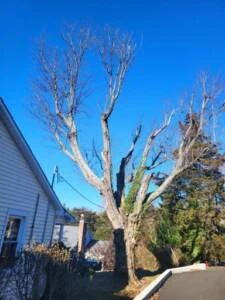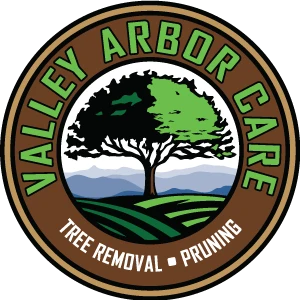The Hidden Dangers of Tree Topping

In our urban landscapes, trees stand tall as silent guardians, providing us with shade, oxygen, and a connection to nature. However, the destructive practice of tree topping is becoming more and more common, posing a serious threat to the health and longevity of these green giants. In this blog post, we will dive into the reasons why topping trees is harmful and explore alternative methods for tree care like tree pruning service and trimming that promote their well-being.
What is Tree Topping?
Tree topping involves the careless cutting of branches and limbs, often reducing the tree’s size dramatically. This practice is often requested and performed with the misconception that it helps manage the height or shape of a tree. Unfortunately, tree topping is a harmful and outdated approach to tree care that may have severe consequences for the trees and the environment such as:
- Stress and Weakness: Topping inflicts severe stress on trees by removing a large portion of their foliage, disrupting their natural balance. This stress weakens the tree, making it more susceptible to diseases, pests, and harsh weather conditions. The tree’s ability to photosynthesize, the process crucial for its survival, is significantly compromised, hindering its overall health.
- Increased Risk of Decay and Disease: The large, open wounds created by topping provide entry points for insects, fungi, and pathogens. As the tree struggles to heal, these invaders can penetrate deeper, causing internal decay and disease. Once established, these issues may lead to irreversible damage and, in extreme cases, the death of the tree.
- Aesthetic and Structural Issues: While tree topping may initially seem like a quick fix for managing height, it results in an unsightly and unnatural appearance. The regrowth that occurs after topping is often weakly attached and prone to breaking, creating safety hazards. Moreover, the tree’s natural form is disrupted, affecting its aesthetic appeal and overall structure.
- Reduced Lifespan: Trees are resilient but topping significantly reduces their ability to recover and thrive. The cumulative effects of stress, disease, and structural weaknesses brought on by topping can drastically shorten a tree’s lifespan. In essence, the very act intended to preserve a tree’s manageable size may ultimately lead to its premature demise.
- Environmentally Unfriendly: Beyond the individual tree, topping has broader environmental implications. Stripped of their natural beauty, topped trees contribute less to the ecosystem by providing reduced habitat and food for wildlife. Additionally, the weakened state of topped trees makes them more vulnerable to extreme weather events, posing risks to nearby structures and residents.
Healthy Alternatives to Harmful Tree Topping
Rather than resorting to harmful practices like topping, there are alternative methods for managing tree size and promoting health which includes:
- Selective Pruning: Arborists can selectively remove specific branches to maintain a tree’s natural form while addressing concerns about height or shape.
- Crown Reduction: This method involves reducing the overall size of the tree’s canopy while maintaining its natural structure. Crown reduction is performed carefully to avoid the negative consequences associated with topping.
- Regular Maintenance: Regularly trimming and pruning trees during their early years can help shape them and manage their size without resorting to drastic measures.
In summary, Tree topping may seem like a quick solution to manage the size of trees, but its harmful consequences far outweigh any perceived benefits. By understanding the negative impact of topping and opting for responsible tree care practices, we can ensure that our urban forests remain healthy, vibrant, and resilient for generations to come. It is our collective responsibility to protect and nurture these green giants that contribute so much to our well-being and the health of our planet.
Contact us at Valley Arbor Care to discuss tree trim services and pruning solutions, and more. Our certified arborists customize solutions for long-term wellbeing rather than quick fixes like topping. We welcome the chance to assess your landscape and recommend maintenance plans aligned with your vision.
